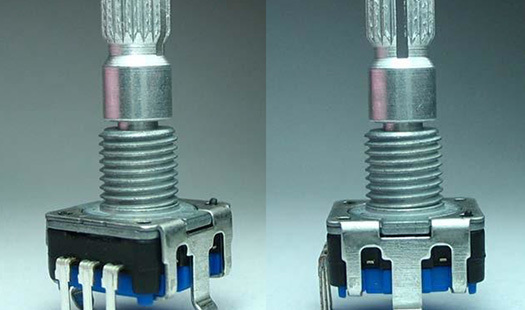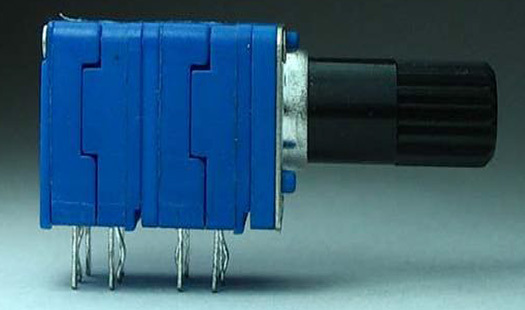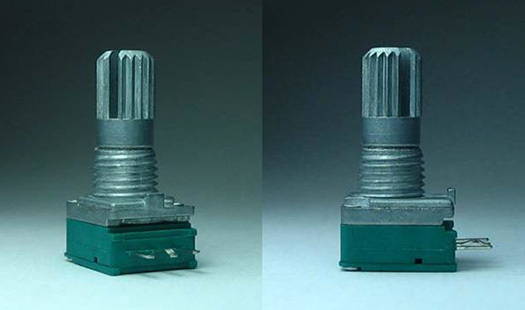How to Seamlessly Integrate 22k Potentiometers into Your Next Gadget
Jun 21,2025
How to Seamlessly Integrate 22k Potentiometers into Your Next Gadget
When designing electronic gadgets, incorporating the right components is crucial for achieving desired functionality and performance. One such vital component is the potentiometer, particularly the 22k potentiometer. This article explores how to integrate 22k potentiometers into your projects, detailing their working principles, applications, and the best practices to ensure optimal performance.
Table of Contents
- Understanding Potentiometers
- What is a 22k Potentiometer?
- Applications of 22k Potentiometers
- Advantages of Using 22k Potentiometers
- How to Choose the Right Potentiometer for Your Gadget
- Step-by-Step Guide to Integrating 22k Potentiometers
- Common Mistakes to Avoid
- Troubleshooting Tips for Potentiometers
- Frequently Asked Questions
Understanding Potentiometers
A potentiometer is a three-terminal resistor that allows for variable resistance. Typically used for adjusting levels, such as volume or brightness, its operation is based on a sliding or rotating contact (wiper) that moves along a resistive element. This versatility makes potentiometers integral to countless electronic applications.
How Potentiometers Work
The primary function of a potentiometer is to adjust voltage and current within a circuit. By altering the resistance, the wiper modifies the amount of electrical signal passing through, thus controlling the output. For instance, in audio applications, turning a potentiometer adjusts the volume by controlling the signal level sent to the amplifier.
What is a 22k Potentiometer?
A 22k potentiometer specifically has a resistance value of 22,000 ohms. It can be found in various forms, including linear and logarithmic types, catering to different applications. The choice of a 22k potentiometer often stems from its compatibility with various circuits, making it a popular choice among engineers and hobbyists alike.
Types of 22k Potentiometers
- Linear Potentiometers: Provide a direct proportional change in resistance relative to the wiper’s position. Ideal for applications requiring precise adjustments.
- Logarithmic Potentiometers: Designed for audio applications, where human perception of sound changes logarithmically. These are ideal for volume controls.
Applications of 22k Potentiometers
22k potentiometers are utilized in a variety of electronic devices, including:
- Audio Equipment: Used in mixers, amplifiers, and soundboards to control volume levels and tone adjustments.
- Lighting Controls: Commonly found in dimmer switches, allowing users to adjust brightness levels effectively.
- Consumer Electronics: Integrated into gadgets such as radios, TVs, and video game controllers for user input.
- Measurement Instruments: Employed in devices like multimeters to calibrate readings and perform fine adjustments.
Advantages of Using 22k Potentiometers
Integrating 22k potentiometers offers several advantages:
- Versatility: They are suitable for a wide range of applications, making them an excellent choice for various projects.
- Availability: Easily accessible and widely used, making them cost-effective and easy to source.
- Precision: They provide fine control over resistance adjustments, enhancing the functionality of your gadget.
- Durability: High-quality 22k potentiometers are built to withstand regular use, providing longevity in your designs.
How to Choose the Right Potentiometer for Your Gadget
Selecting the appropriate potentiometer involves considering various factors:
1. Resistance Value
Ensure that the resistance value meets the requirements of your application. The 22k value is versatile but may not suit all needs.
2. Type of Potentiometer
Choose between linear and logarithmic types based on your application—linear for precise adjustments and logarithmic for audio applications.
3. Power Rating
Consider the power rating of the potentiometer to ensure it can handle the expected current without overheating.
4. Physical Size and Mounting Type
Ensure the potentiometer fits your design layout and is compatible with the mounting style, whether through-hole or surface mount.
Step-by-Step Guide to Integrating 22k Potentiometers
Integrating a 22k potentiometer into your gadget involves several essential steps:
1. Design Your Circuit
Start by designing the circuit layout where the potentiometer will be used. Ensure proper placement to minimize interference with other components.
2. Choose the Right Potentiometer Type
As discussed, select the type of potentiometer that aligns with your project’s requirements.
3. Prepare Your Schematic
Create a schematic that illustrates how the potentiometer connects to the other components within your circuit. Ensure clear representation of all connections.
4. Solder the Potentiometer
Carefully solder the potentiometer onto your circuit board, ensuring solid connections to avoid any issues during operation.
5. Test Your Integration
Before finalizing your design, conduct tests to ensure the potentiometer functions correctly within the circuit. Adjust as necessary.
6. Finalize the Design
Once testing is complete, finalize your design and prepare for production or assembly.
Common Mistakes to Avoid
While integrating 22k potentiometers, certain pitfalls can hinder your project:
- Incorrect Resistance Value: Double-check the required resistance for your application to avoid performance issues.
- Poor Soldering: Ensure clean and secure soldering to prevent connection failures.
- Neglecting Power Ratings: Using a potentiometer that cannot handle your circuit's current may lead to damage.
- Ignoring Type Requirements: Always choose the right type of potentiometer for your specific needs.
Troubleshooting Tips for Potentiometers
If you encounter issues with your 22k potentiometer, consider the following troubleshooting tips:
- Check Connections: Ensure all connections are secure and correctly oriented.
- Test Resistance: Use a multimeter to check the resistance and ensure it aligns with expected values.
- Inspect for Damage: Look for any signs of physical damage or wear that could affect performance.
- Confirm Power Supply: Verify that your power supply is functioning correctly and providing the necessary voltage.
Frequently Asked Questions
1. What are the primary uses of a 22k potentiometer?
22k potentiometers are commonly used in audio equipment, lighting controls, and various consumer electronics to manage volume, brightness, and other adjustable parameters.
2. How do I know if I need a linear or logarithmic potentiometer?
If your application involves audio settings, opt for logarithmic potentiometers. For general adjustments, linear types are suitable.
3. Can I use a potentiometer with a higher resistance value?
While you can use a higher resistance potentiometer, ensure that it aligns with the voltage and current requirements of your circuit for optimal performance.
4. How do I test a potentiometer?
To test a potentiometer, use a multimeter to measure the resistance across the terminals while adjusting the wiper position.
5. What should I do if my potentiometer is not functioning correctly?
Check all connections, test the resistance, inspect for damage, and ensure that your circuit is powered correctly. Adjust or replace the potentiometer as needed.
Conclusion
Integrating a 22k potentiometer into your next gadget can significantly enhance its functionality and user experience. By understanding its working principles, applications, and following best practices during integration, you can ensure the optimal performance of your electronic project. Remember to choose the right potentiometer type, avoid common mistakes, and utilize troubleshooting tips for a successful implementation. With this comprehensive guide, you are well-equipped to incorporate 22k potentiometers seamlessly into your designs, bringing your innovative ideas to life.
PREVIOUS:
More Information
More Information
RECOMMENDED










